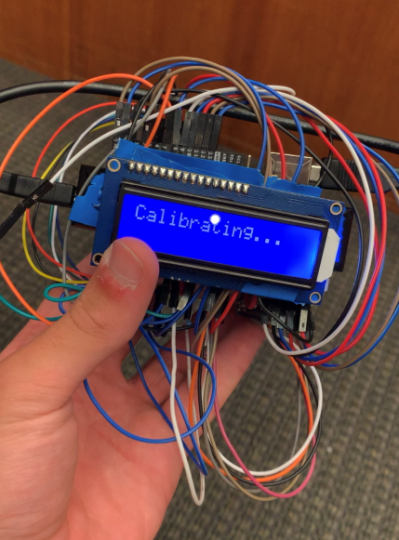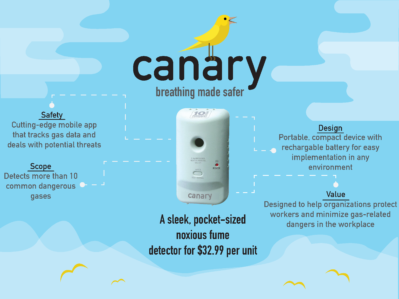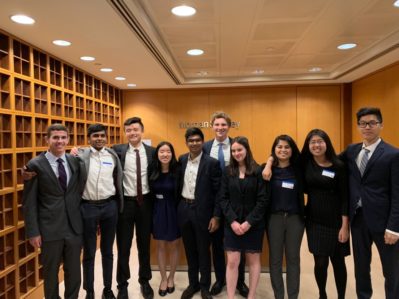What prompted you to apply to be an M&TSI attendee?
I applied to M&TSI because I wanted to learn more about the qualities of successful startups and what differentiates them from ones that fail. I also wanted to apply to M&TSI to learn more about the intersection of business and technology, two fields that I had been interested in prior to the program, but had little experience combining.
What was a typical day like?
On a typical day, classes would begin at 9AM. After our morning business lecture we would be given a 1 hour lunch break where we would usually eat at Houston Hall. After lunch we would have an engineering lecture explaining concepts pertinent to that day’s lab assignment, followed by a presentation about one of Penn Engineering’s many majors. After the engineering lecture we would go to the lab and work until 5-6 PM. We were then free until curfew

to either socialize with other students or to do our homework. Homework typically consisted of reading a case study and other supplemental readings along with preparing thoughtful and specific questions for a guest speaker the next day. On Saturdays we would have field trips to fun locations like Ocean City and Six Flags.
How did your team come up with your product? What was it?
Given the theme: Data for your benefit and that of others, my team and I decided to start approaching our ideas by thinking of situations in which small amounts of data can have a large impact across a variety of scenarios. This led us to thinking about situations affecting the world at large, such as air pollution in places like India and China, where data as simple as the composition of the air being breathed could save billions of lives. In response to this, we created Canary: a pocket-sized noxious gas and microparticle detector. Canary was capable of detecting more than 10 of the most common dangerous gases, as well as harmful microparticles like asbestos. The product poster that we created for the device won the award for Best Poster Advertisement.
What was your favorite part of the program?
My favorite part of the program was our field trip to New York City. I particularly liked doing the Google mock-IPO at Morgan Stanley, where we modeled the events leading up to the Google’s 2004 IPO and simulated the first day of trading. This is because I have always been interested in investment banking and the field trip gave me the opportunity to get real taste of what that profession is like.
 What was challenging?
What was challenging?
The program’s rigorous classes combined with developing a product in parallel with our lecture assignments made balancing the workload of M&TSI very challenging. In addition to this, developing a complex, yet fully-functional prototype within such a short amount of time was also very difficult since it required lots of testing and debugging. However, the challenges of the program served as excellent motivators that pushed me to put forward my best efforts and ultimately helped my team develop a much better product than we initially thought we could create.
What was your biggest takeaway from M&TSI?
My biggest takeaway from M&TSI is that I now have a greater understanding of how to transform an idea I have for a solution into a viable business venture that is capable of solving problems on a much broader scale.
How did M&TSI help shape your future academic/career goals?
M&TSI has confirmed my interest in studying business, engineering, and the intersection of the two. The program has also helped grow my interest in entrepreneurship, giving me an immediate goal of pursuing the development of Canary with one of my friends from the program and a long-term goal of attempting to launch other hi-tech ventures.
Anything else you’d like to add?
The RTAs were extremely helpful in helping me learn more about the M&T program and what it was like to study in it. Based on my experience during M&TSI and the positive experiences of being a student in the program from my RTAs, I have become certain that I want to study in the M&T program.


